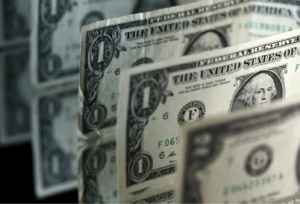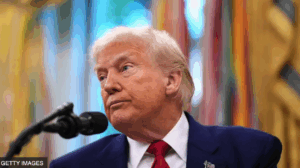Key Points
- It seems likely that several Chinese cities have paused car-buying subsidies due to funds running out faster than expected.
- Research suggests the pause affects at least six cities, including Zhengzhou and Guangdong, impacting sales of electric and fuel-efficient vehicles.
- The topic is debated, with controversy around “zero-mileage used cars” contributing to the fund depletion, and authorities are investigating.
Background
Several Chinese cities have recently suspended car-buying subsidies, part of a trade-in program to boost sales of electric and fuel-efficient vehicles. This pause, reported on June 18, 2025, is due to funds being exhausted quicker than anticipated, potentially affecting the automotive market in China, the world’s second-largest economy.
Details and Context
The subsidies, offering up to 20,000 yuan ($2,780) toward purchasing a newer model car, have been paused in cities like Zhengzhou, Luoyang, Shenyang, Chongqing, Xinjiang, and provinces including Guangdong, Henan, and Zhejiang. The rapid depletion of funds is partly attributed to the practice of selling “zero-mileage used cars,” where new cars are sold as used to exploit subsidies. Authorities are probing this issue, and while the program is set to continue through 2025, new funding is expected in the third quarter starting July.
Implications
This pause could slow new car sales, especially as about 70% of personal car purchases in May utilized the subsidy. It’s part of broader efforts to stimulate consumption amid economic challenges, but fiscal pressures and the need for better oversight are highlighted.
Comprehensive Analysis: Pause of Car-Buying Subsidies in Chinese Cities
This note provides a detailed examination of the recent pause in car-buying subsidies by several Chinese cities, as reported on June 18, 2025, drawing on news articles from Reuters and Bloomberg to offer a comprehensive perspective on the issue, its implications, and the surrounding context.
Overview of the Subsidy Program and Pause
The car-buying subsidies in question are part of China’s trade-in program, specifically targeting electric and fuel-efficient vehicles, offering consumers up to 20,000 yuan ($2,780) toward the purchase of a newer model car. Originally set to continue through the end of 2025, the program has been suspended in at least six cities and municipalities, including Zhengzhou, Luoyang, Shenyang, Chongqing, Xinjiang, and key cities in provinces such as Guangdong, Henan, and Zhejiang, as reported by Reuters and Bloomberg.
The pause, effective in June 2025, is primarily due to the funds allocated for the program running out faster than expected. Notices from governments, such as those in Zhengzhou and Luoyang, explicitly blamed the exhaustion of the first round of funding allocated by Beijing, while cities like Shenyang and Chongqing mentioned adjustments for capital efficiency, according to Reuters.
Context and Timing
The timing of this pause is significant, occurring amidst broader economic challenges in China, including a weakening economy and efforts to stimulate consumption. The program is part of a larger cash-for-clunkers initiative, supported by 300 billion yuan in ultra-long special treasury bonds for consumption stimulus, with 162 billion yuan already disbursed, as noted by Bloomberg. The subsidies have been crucial, with data from the China Passenger Car Association indicating that about 70% of personal car purchases in May 2025 utilized the trade-in subsidy, similar to April, highlighting its importance for retail sales growth.
The pause comes at a time when China’s automotive sector is under scrutiny due to a deepening price war, sapping profitability, and the prevalence of “zero-mileage used cars”—new cars sold as discounted used cars to take advantage of subsidies. This practice has been identified as a major contributor to the rapid depletion of funds, with reports from Dahe Daily and People’s Daily, cited by Reuters, noting it as a significant issue.
Reasons for the Pause
The primary reason for the pause is the exhaustion of allocated funds, with over 4 million applications for car-specific trade-in subsidies recorded as of May 31, 2025, per the Ministry of Commerce, as reported by Reuters. The high demand, coupled with abuse through “zero-mileage used cars,” has led to fiscal pressures, prompting authorities to suspend the program in affected cities. Bloomberg also mentions fiscal pressures and the need to study ways to prevent abuse, with authorities probing these practices to ensure proper allocation of resources.
Regulatory actions have been taken to address related issues, with China’s Ministry of Industry and Information Technology, along with two other agencies, meeting 17 major Chinese automakers in early June 2025 to address problems including “zero-mileage” used cars, as noted by Bloomberg. Additionally, the industry ministry summoned automakers earlier in June to halt price wars, and Great Wall Motor Chairman Wei Jianjun condemned the practice of zero-mileage used cars, according to Reuters.
Impact on Car Sales and Economy
The pause is expected to slow new car sales in China, the world’s second-largest economy, which could have broader implications for retail sales growth. Reuters reports that the subsidies helped fuel a 6.4% retail sales growth in May 2025, and their suspension could dampen this momentum. Given that about 70% of personal car purchases in May relied on the subsidy, as per Bloomberg, the impact could be significant, especially for electric and fuel-efficient vehicle sales, which are key to China’s green energy goals.
Future Outlook and Policy Implications
While the pause is temporary, with expectations of new funding in the third quarter starting July, as per the National Development and Reform Commission and Ministry of Finance, cited by Reuters, the continuation of the program through 2025 is uncertain without official announcements. The central government is guiding provinces to maximize policy effects, according to Bloomberg, but fiscal constraints and the need for better oversight are evident.
The controversy around “zero-mileage used cars” adds complexity, with regulatory actions underway to prevent abuse. This situation highlights the challenges of implementing large-scale subsidy programs in a competitive market, especially amidst economic pressures and the need to balance consumer incentives with fiscal responsibility.
Comparative Analysis: Subsidy Utilization and Impact
To illustrate the scale and impact, consider the following table summarizing key data points:
| Metric | Details |
|---|---|
| Cities Affected | At least 6, including Zhengzhou, Luoyang, Shenyang, Chongqing, Xinjiang, and provinces like Guangdong, Henan, Zhejiang |
| Subsidy Amount | Up to 20,000 yuan ($2,780) per vehicle |
| Applications (as of May 31) | Over 4 million |
| May 2025 Subsidy Usage | About 70% of personal car purchases |
| Expected New Funding | Anticipated in Q3 (July onwards), no official announcement yet |
| Program Duration | Set to continue through 2025, subject to funding |
This table underscores the program’s scale and the potential impact of the pause on car sales and economic stimulus efforts.
Conclusion
The pause in car-buying subsidies by several Chinese cities, reported on June 18, 2025, reflects the challenges of managing large-scale fiscal programs amidst high demand and abuse. While the program has been vital for boosting car sales, especially for electric and fuel-efficient vehicles, the rapid depletion of funds due to “zero-mileage used cars” and fiscal pressures has led to temporary suspensions. Authorities are addressing these issues, with expectations of resumed funding in the third quarter, but the situation highlights the need for better oversight and sustainable policy implementation in China’s automotive sector.



+ There are no comments
Add yours